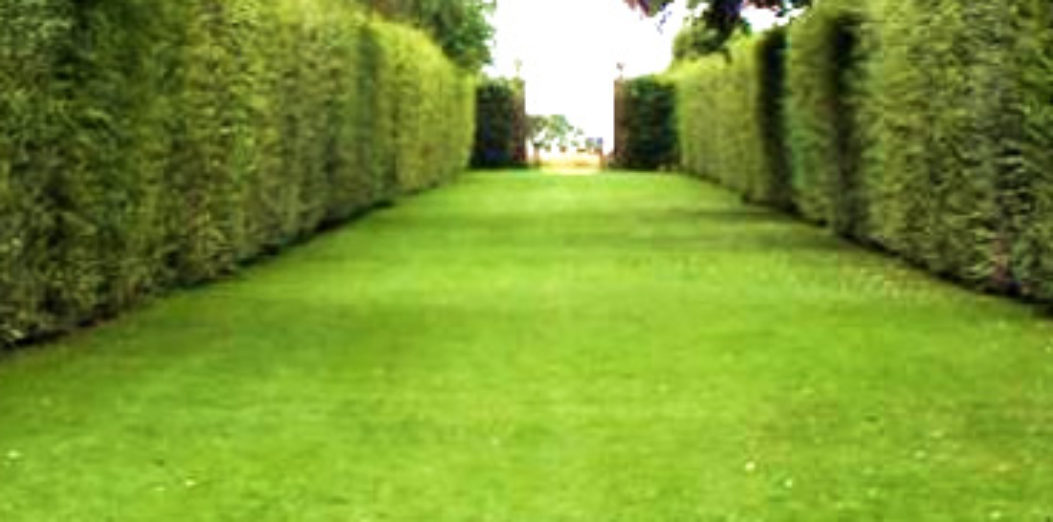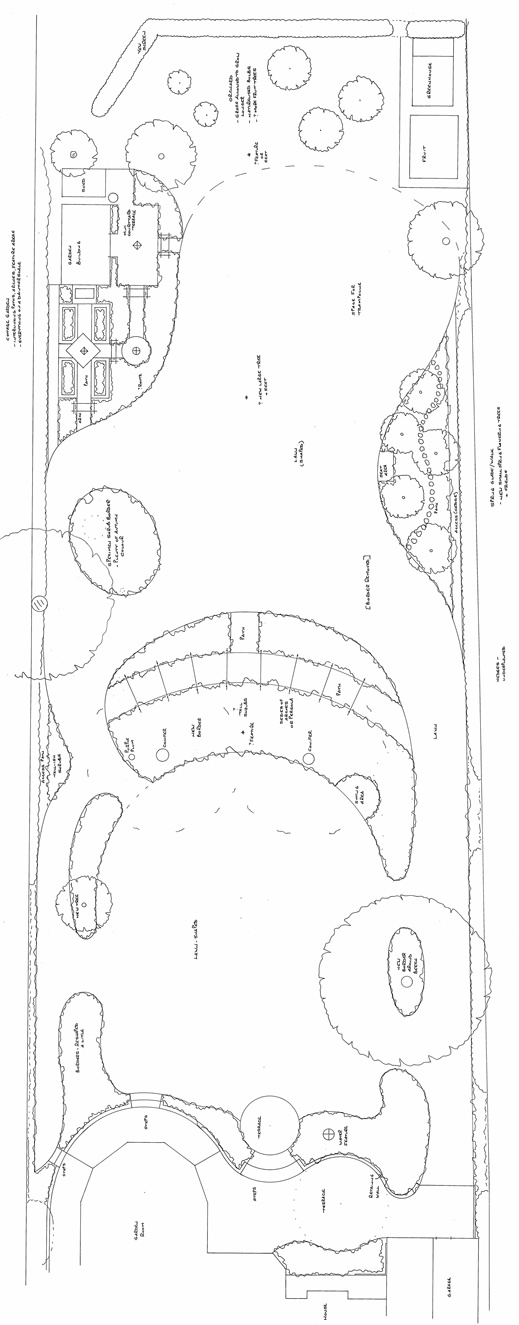How to cope with… a long narrow garden

Long, narrow gardens have several drawbacks, particularly if they are very narrow:
- the patio can seem very cramped for space (although the overall area of the garden may be quite large)
- being in the garden can feel a bit like being in a tunnel or corridor, through which you are being ushered at an uncomfortably fast pace
- the garden can appear very straight and rectangular
Below is just one example of a plan for a garden where the length far exceeds width, albeit in this case the garden is still rather wide. The same principles apply to smaller scale gardens of similar proportions. It is in these smaller gardens, where the width is perhaps only 4 or 5m, that the problem is particularly accentuated – and so the benefit of some of these ideas will be particularly conspicuous. Notice the following:
- We’ve divided the garden into separate ‘rooms’ or areas, with each section of the garden having its own character and / or purpose. This “slows the pace”, and creates more of a sense of width relative to depth. The garden can be divided using trellis, fencing, walls and other hard landscaping methods, but here we’ve employed a much softer, more subtle, yet equally effective division using plants. As well as hedges, informal shrub borders can work very well.
- The different compartments in the garden can be purely functional – the sitting area, the vegetable garden, play lawn, utility area etc; or they can relate to the character of the garden or its planting – see the Spring glade/walk to the right of this plan for example, with spring flowering trees; also the cottage garden to the top left, with everything on a much more dainty scale.
- The different rooms can, if you wish, be angled differently to the rest of the garden – perhaps diagonally, or at 90 degrees – the latter is particularly useful if you want to have, say, a quiet space to contemplate in the garden, and is therefore often used in conjunction with seating.
- Notice how the materials used to divide the garden (hedges and trellis for example) are also useful as a means of disguising less attractive elements such as sheds, compost and bins.
- To avoid the (divided) garden looking much smaller than it actually is, we’ve allowed small gaps in the planting – revealing glimpses of what lies beyond.
- If the garden isn’t too narrow, (and finances permit) you might consider laying a path up the garden. HOWEVER…! Make sure it’s not a long straight path (which will only reinforce and emphasise the long narrow dimensions), but a path which sweeps and curves its way up and across the garden. The path could perhaps start on one side of the garden, and end up on the other – with lawns, borders and other areas connecting to the path.
This is just one solution; if you don’t feel like dividing up the garden, another option is to use / shape the lawn a bit like a river – allowing it to meander its way, Picasso style, up the garden, deviating here and there to points of interest. Not all of the lawn needs to be visible at once; borders and other areas can be used to define views and hide, for example, private sitting areas. The benefit of using the lawn like this is that it overcomes the rectangular feel of the garden. But it is essential to ensure that the sweeps of the curves are generous (like those shown on the plan above), not tight and fiddly.
Image credits: Dave Catchpole (cropped & colour altered), ALDA.
